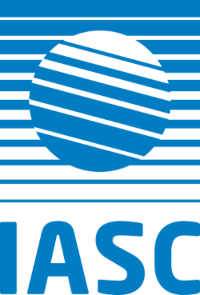Lee Cooper, IASC Marine Working Group Chair submitted the following report. If you are interested in representing IASC at upcoming Arctic Council meetings, please contact the IASC Secretariat.
I attended a portion of the PICES-2019 Annual Meeting in Victoria, British Columbia, Canada, responding to an invitation tendered to IASC to provide an Observer participant. Specifically, I attended a Working Group meeting on 16 October 2019 on “Scoping an IEA of the Northern Bering-Chukchi Seas LME” (IEA=Integrated Ecosystem Assessment: LME= Large Marine Ecosystem) and on 17 October 2019, a Workshop on “PICES contribution to Central Arctic Ocean (CAO) ecosystem assessment.” Finally, I attended the business meeting of the CAO ecosystem assessment working group on 20 October 2019.
The first meeting on the Bering and Chukchi seas was organizational and a prelude to a proposal being submitted to the Science Board of the PICES organization (https://meetings.pices.int/members/committees/SB) for support of an IEA for the northern Bering and Chukchi seas. Following the 16 October 25, 2019 workshop, a proposal was developed and I contributed to the editing of the proposal. This proposed IEA is modeled after efforts that have been previously undertaken by PICES and the US agency NOAA (National Oceanic and Atmospheric Administration) that assess the state of marine ecosystems with an ultimate goal of contributing to future fisheries and ecosystem management. The approach is similar to that being pursued in the CAO. This region has no current commercial fisheries, but trawl surveys show that fisheries from the more southern areas of the Bering Sea are moving north due to the lack of thermal barrier that has existed until recently, which suppressed northward migration of fish such as Alaska Pollock and Pacific cod due to low water temperatures. This potential significant change in the marine ecosystem of the northern Bering and Chukchi seas has attracted significant attention and formed the basis for this workshop. While this topic is within the interests of IASC and Pacific Arctic Group countries such as the United States, Korea, Japan, and China that are also members of IASC, my perceptions were that IASC should continue to express its interests in involvement in networks, studies, assessments and other science planning activities that interest both PICES and IASC. In my opinion, there is not a great deal of familiarity within the PICES meeting participants of the work of IASC that has contributed to, including assisting in the development of the Pacific Arctic Group, and helping to better coordinate research in the Pacific Arctic area that includes the northern Bering and Chukchi seas.
The second event that I attended was the CAO ecosystem assessment workshop. The assessment is underway with active sponsorship from PICES, ICES (International Council for Exploration of the Seas), and PAME (Arctic Council Protection of the Arctic Marine Environment). Two allotments of funding have been received from the PICES Secretariat and the assessment is to continue through 2021. Again, there is acknowledgement of IASC’s interests in coordinating international scientific research in the Arctic, but this assessment is following PICES and ICES models that can focus on fisheries further south, and the possibility that fisheries will develop in the central Arctic Ocean outside of the 200-mile exclusive economic zone for any country. IASC is actually involved through participation of former IASC vice-president Jackie Grebmeier as an outside expert on the Working Group, and the Marine Working Group of IASC has also had briefings on the potential for CAO fisheries and the associated international agreement establishing a moratorium on fisheries in the CAO from representatives of the Pew Charitable Trusts at the past three ASSW meetings.
The final meeting that I attended on 20 October 2019 was the business meeting associated with the CAO ecosystem assessment. The working group is seeking funding from the PICES Secretariat to hold a science symposium session at the 2021 PICES meeting in Tsingtao, China that would attract experts to share scientific results relevant to the CAO IEA. I conveyed the interest of IASC, including the possibility that the Marine Working Group of IASC could potentially help support early career scientist travel to Tsingtao and that I would be willing to work with the CAO working group on developing a proposal, if that was appropriate. Other discussions centered on changes to the terms of reference for the working group, progress on the 2018 status report that is due to the PICES Secretariat and identification of priority science needs.
